Rugby
Scrum Basics in Rugby: What You Need to Know
Set pieces are the cornerstone of rugby union but not so much in rugby league and sevens rugby. Lineouts and driving mauls are important set pieces, but what is a scrum in rugby?

Rugby Match//Getty Images
Scrums (scrummage) are one of the most complicated aspects of rugby union. They are used to restart the game after a knock-on, forward pass, or the ball becomes unplayable at the ruck or maul. A scrum can also be awarded after a free kick or penalty. If a kick-off or restart goes directly into touch, a scrum is awarded to the opposition.
Scrums are integral across all rugby codes. They are important in rugby union but do not have the same impact on rugby league and sevens rugby. SportsBoom has unpacked this bizarre sporting enigma, and how this set piece is used across rugby’s three codes. What is a scrum in rugby?
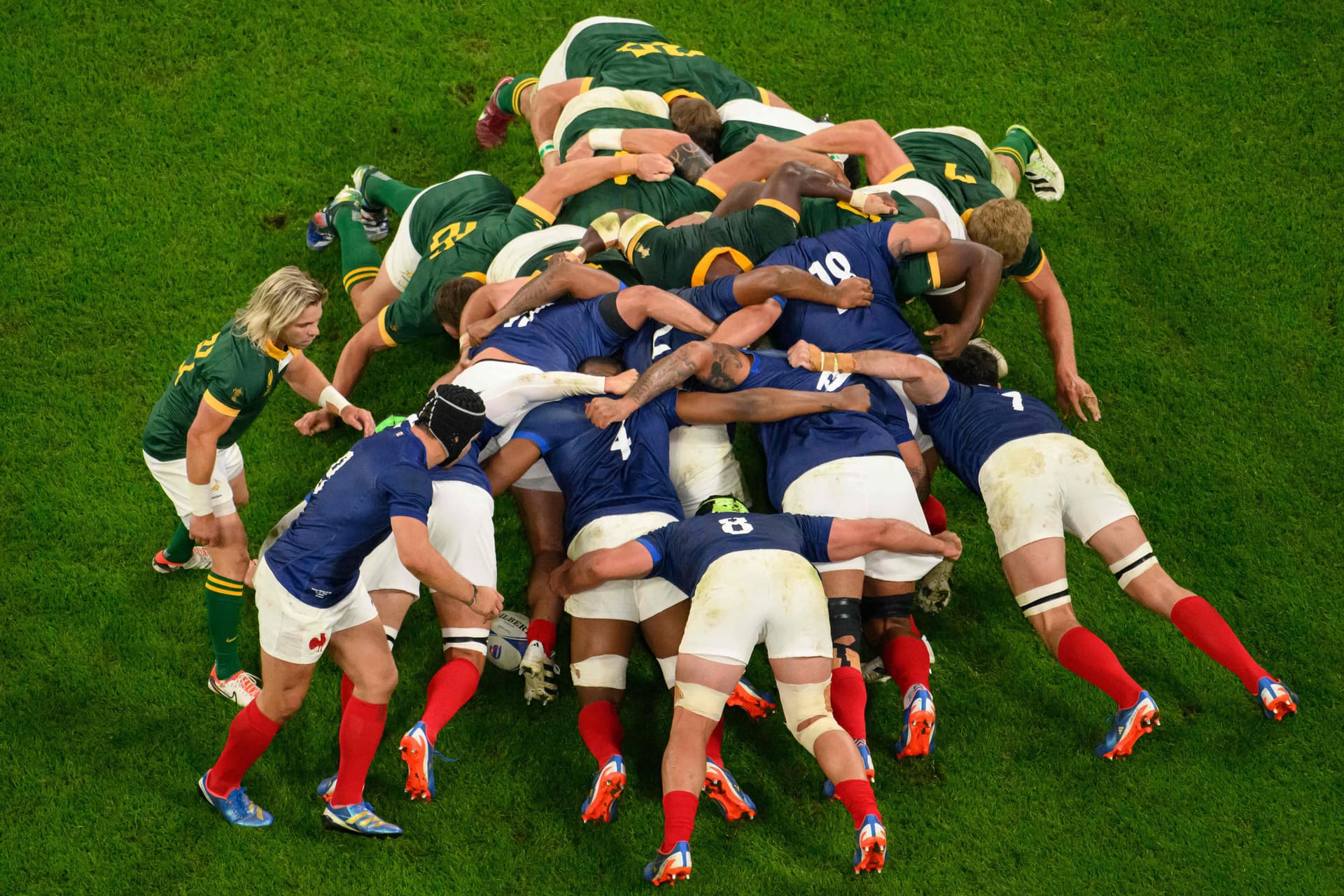
TOPSHOT-RUGBYU-WC-2023-MATCH44-FRA-RSA//Getty
What is a Scrum in Rugby Union?
Scrums are the most important set piece in rugby union. The lineout and driving maul have become as important in the modern game, but scrums still reign supreme. The team with the best scrum often wins. Teams with weak scrums have a disadvantage and will – more than likely – lose. South Africa is the best at utilising the scrum to dominate the opposition.
Scrums set up attacking platforms for the forwards and backline. All eight forwards form a scrum. The scrum formation is 3-2-2-1 or 3-2-3, depending on how you define the loose forwards. The most important part of the scrum is the front row, especially the loosehead and tighthead props. The tighthead, however, is the most valued player in the scrum, and often the hardest position to fill.
The front row is made up of two props and a hooker. Two locks form the second row and combine with the front row to make up the tight five. A blindside and an openside flank attach to the locks, and the eighth man binds between the locks to form the scrum - the flanks and number eight form a back row of loose forwards. The forwards are numbered one to eight, and the backs are numbered nine to fifteen.
Number of Players in Rugby Scrums
| Number of Forwards Rugby Union | Number of Forwards Rugby League | Number of Forwards Sevens Rugby | |
| 8 | 6 | 3 | |
| Scrum Formations | 3-2-2-1 / 3-2-3 | 3-2-1 | 3 |

NRL Rd 21 - Sea Eagles v Panthers//Getty
What is a Scrum in Rugby League?
Scrums are not important in rugby league. They are used to restart the game after a knock-on, forward pass. There are no lineouts in rugby league. If the ball goes out of play or over the touchline, the game begins with a scrum.
The scrum has six players, two fewer than rugby. There is no need for flanks because rugby league has no rucks. The game uses an uncontested play-the-ball system of six phases. Rugby union, however, contests fierce battles for possession at the breakdown, where turnovers are possible.
The forwards in rugby league are numbered differently to rugby union. Apart from the loosehead prop, who wears the number eight, the other five forwards have numbers used by the backs in rugby union. The front row is numbered eight to ten, the second row, eleven and twelve. The lock – or loose forward – is numbered thirteen.
Forwards in Rugby League and Rugby Union
| Forwards / Backs | Rugby League Positions: Names & Shirt Numbers | Rugby Union Positions: Names & Shirt Numbers |
| Front Row Forwards | Front Row: Props (8 &10) Hooker (9) | Loosehead Prop (1) Hooker (2) Tighthead prop (3) |
| Second Row | Second Row (11 & 12) | Locks / Second Row (4 & 5) |
| Loose Forwards / Back Row | Lock / Loose Forward (13) | *Blindside Flanker (6), *Openside flanker (7) No. 8/Eighth Man/Number Eight/ (8) |
What is a Scrum in Sevens Rugby?
Scrums in Sevens Rugby work the same way as in rugby union. The set piece is not as crucial to the outcome as the fifteen-man game, but they are a platform for every attack. With fewer backline defenders, winning quick-ball will open up many scoring chances.
Sevens Rugby is fast and exciting. The players are extremely fit, and the skill level is off the charts. Scrums consist of three players in sevens rugby. Two sets of front rows contest the set piece. They are contested but do not impact the game with the same importance as rugby union.
Scrums in Sevens also lead to penalties and free kicks. Three-man scrums are contested with the ferocity of fifteen-man rugby, despite no traditional-style props, which makes for interesting viewing. The three forwards are numbered one to three, like rugby union.

South Africa captain, raises the Webb Ellis Cup//Getty
The Most Iconic Match Where the Scrum Dominated
2019 Rugby World Cup Final, Yokohama, Japan: South Africa 32-12 England
The Rugby World Cup final is the biggest, most anticipated Test match in the sport. South Africa and England are traditionally forward-dominating teams. Nobody foresaw what was about to take place. CNN noted that South Africa “physically out-gunned their opponents.”
The BBC said: “South Africa broke English hearts with a ruthless display of power rugby to seize their third Rugby World Cup title in devastating fashion.” During the pre-game press conferences, Dan Cole and Joe Marler fooled around. They made childish remarks about the Springbok, disrespecting their opponents, which the Boks made note of. Marler and Cole’s immaturity backfired spectacularly.
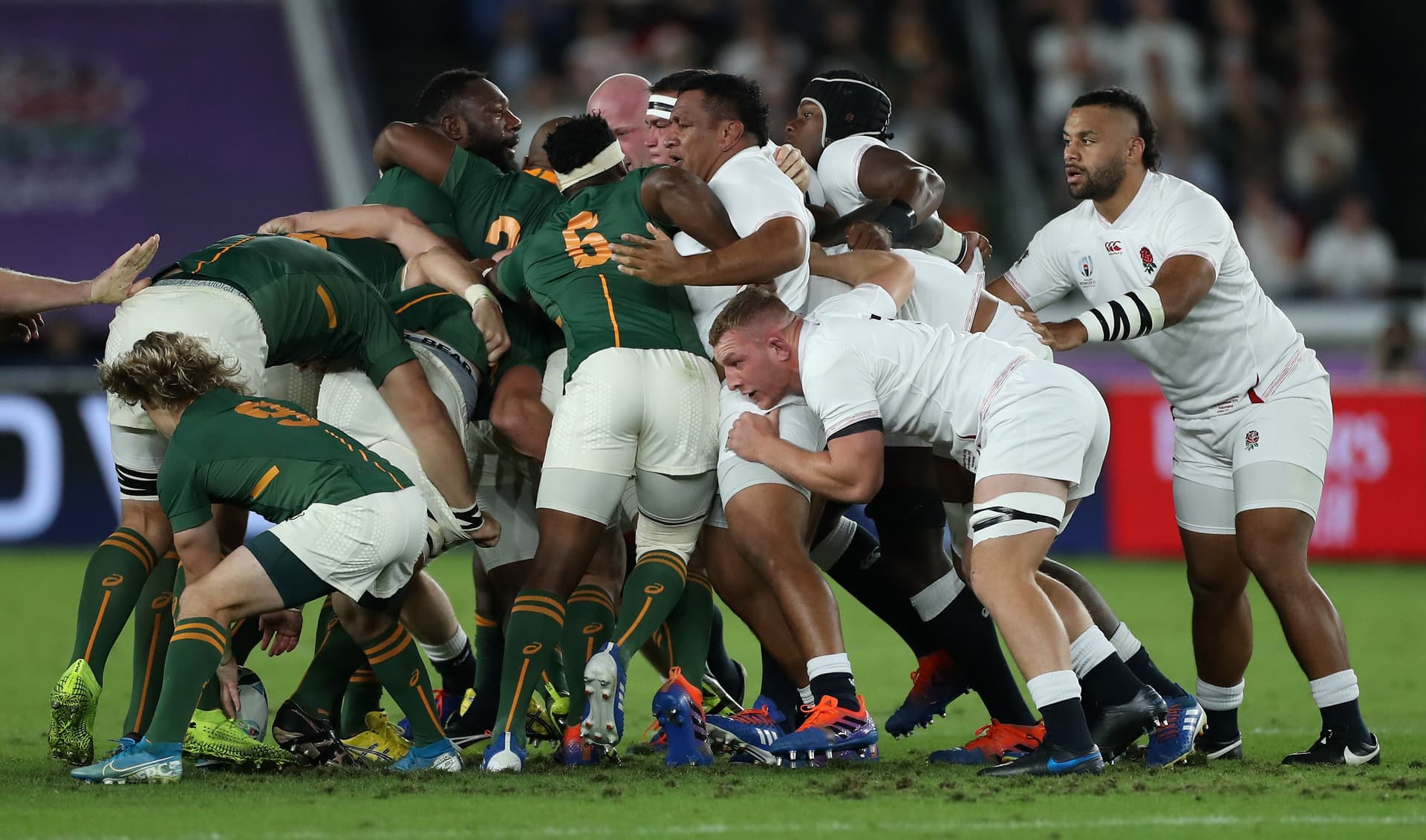
England scrum is pushed back during the Rugby World Cup//Getty
They were humiliated at scrum time as the Boks pulverised an over-confident and over-rated English pack. The BBC added: “[England] were out-muscled, out-run, and out-thought” and that South Africa “made a mess of the England scrum.” From the kick-off, the Springboks dominated England upfront. Sky Sports wrote that the World Cup final was “a ruthless reminder of the scrum’s critical importance in Test match rugby.”
Minutes into the game, England lost starting tighthead Kyle Sincler after colliding with teammate Maro Itoje. This left England with one tighthead prop for the rest of the match. Enter 32-year-old Cole. The veteran prop would have to play the remainder of the game, something his fitness could not withstand. Cole and Marler’s performances are two of the worst in Test match history. But the rest of the pack was as culpable for what happened.

Dan Cole of England is driven up in the scrum by Tendai Mtawarira//Getty Images
Another factor for Cole was he had to scrum against two of the best loosehead props in world rugby. A monumental task considering Tendai ‘Beast’ Mtawarira and Steven Kitshoff would share the game-time, and both be fresh as Cole tired. What ensued was total annihilation as the Springboks “pummelled” the opposition’s pack.
The first play after Sinkler left the field was a scrum. The Boks pack obliterated the English forwards, winning the first four first-half scrum penalties. Three scrum penalties resulted in nine points as South Africa took a 12-6 lead into the break. England were barely hanging on. Four minutes into the second half, Rassie Erasmus turned to the bench and released his fabled “Bomb Squad” onto the field.
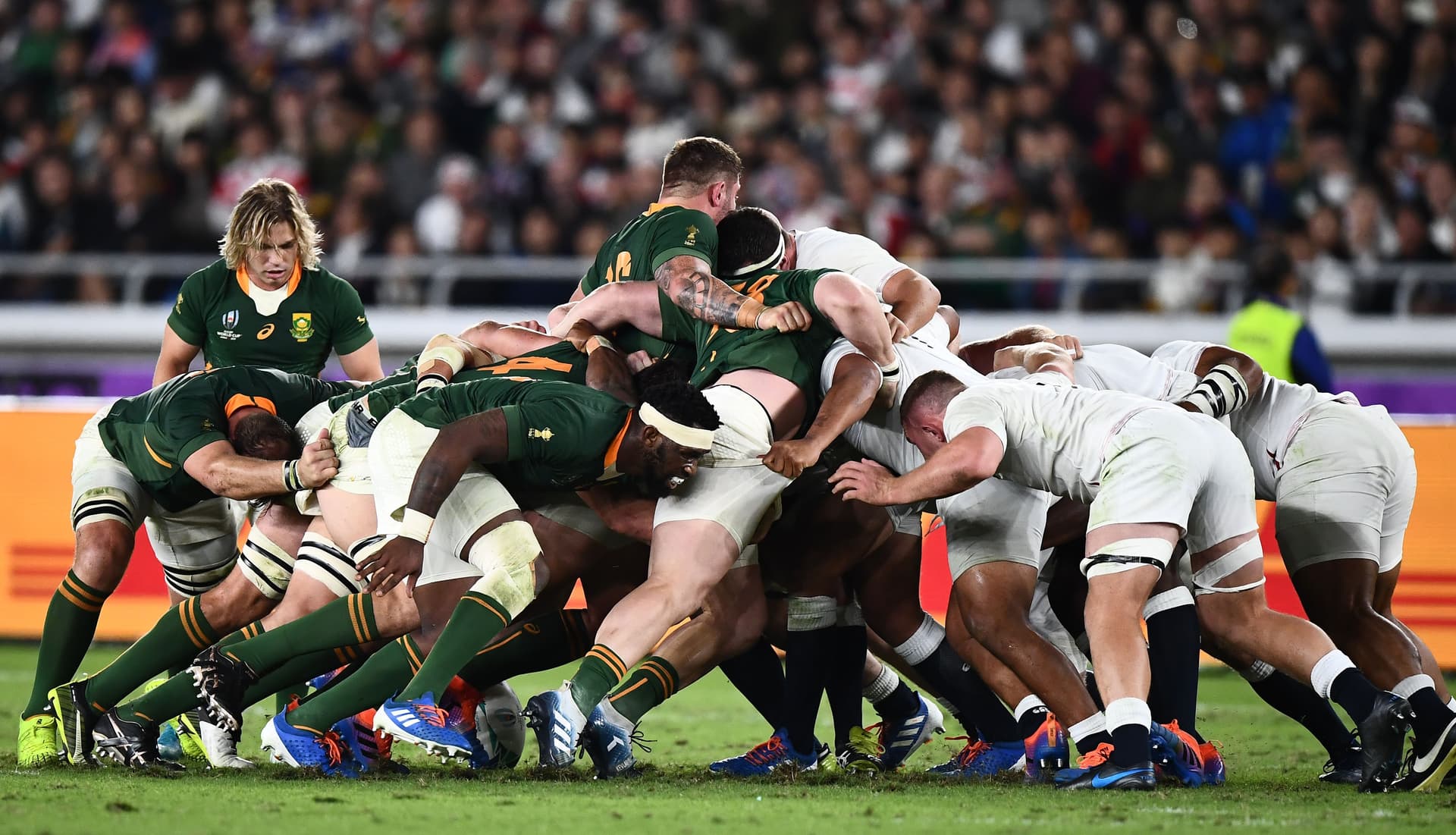
Players take part in a scrum during the Japan 2019 Rugby World Cup//Getty Images
Cole was beginning to fatigue. Kitshoff and Vincent Koch entered the game. Sky Sports described the first scrum of the second half as “the most dominant scrum effort of the Test, annihilating their English counterparts.” Handre Pollard added his fifth penalty to give his side a nine-point advantage. Marler replaced Mako Vunipola, but the mismatch in the forwards continued.
South Africa squeezed England. The errors mounted, and the Boks added another three points. England added a couple of penalties to stay in the hunt, but two late Springbok tries made the gap 20 points, the highest winning margin in a World Cup final. The joke was on England, who finished the worst performance in a final, with egg on their face.
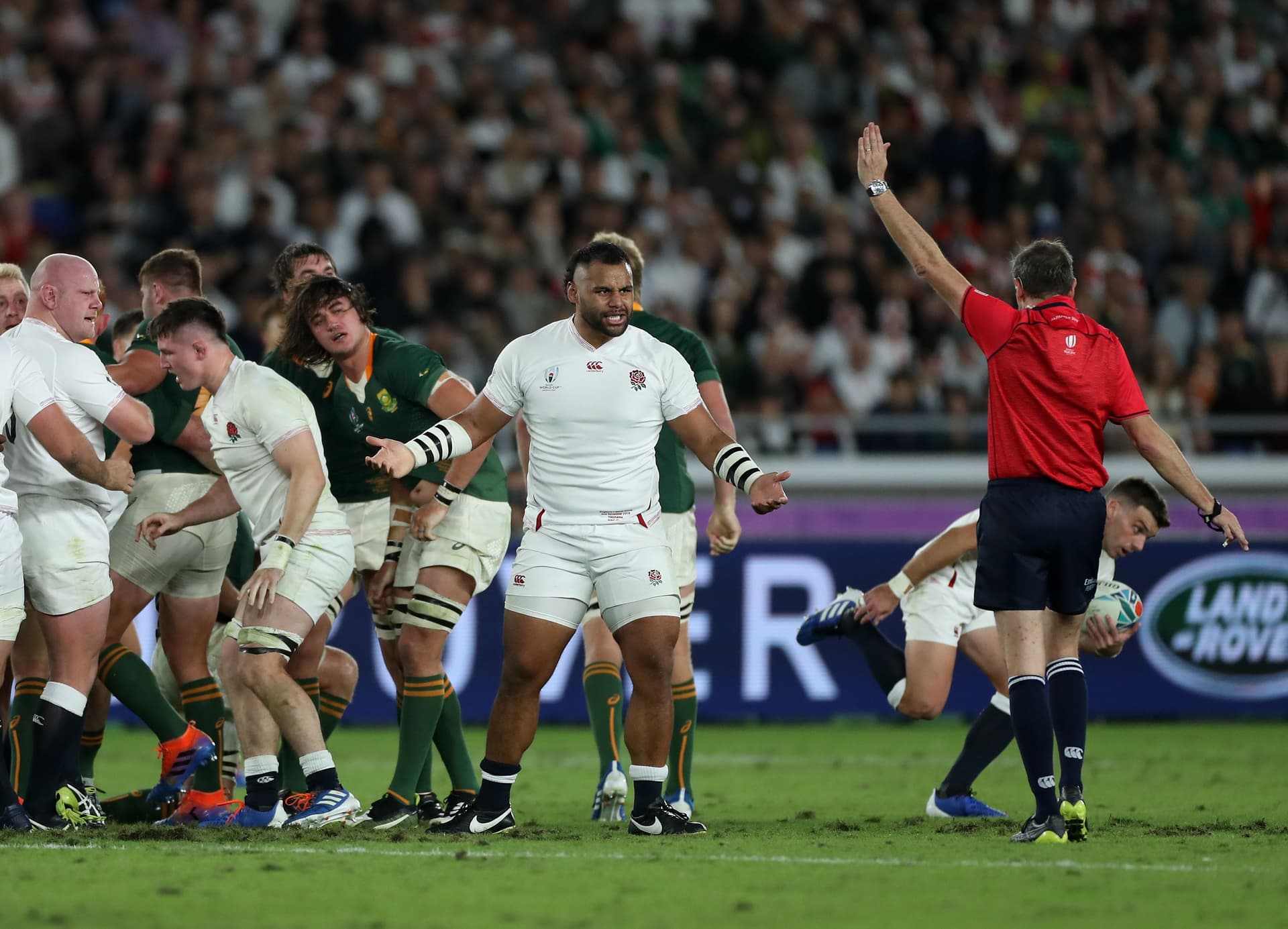
Jerome Garces, the referee awards a scrum penalty//Getty Images
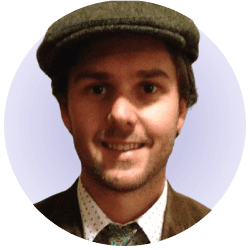
Kaylan Geekie is a sports fanatic. He attended Durban High School before moving to Scotland, where he lived for 15 years. During his time in the United Kingdom, Kaylan graduated with a first-class BA Honours Degree in Sports Journalism at the University of the West of Scotland. Kaylan worked for nine years as the Match-Day Editor of SuperXV.com, reporting on Super Rugby, The Rugby Championship, the 2015 Men's Rugby World Cup and the 2017 British & Irish Lions series for the website.